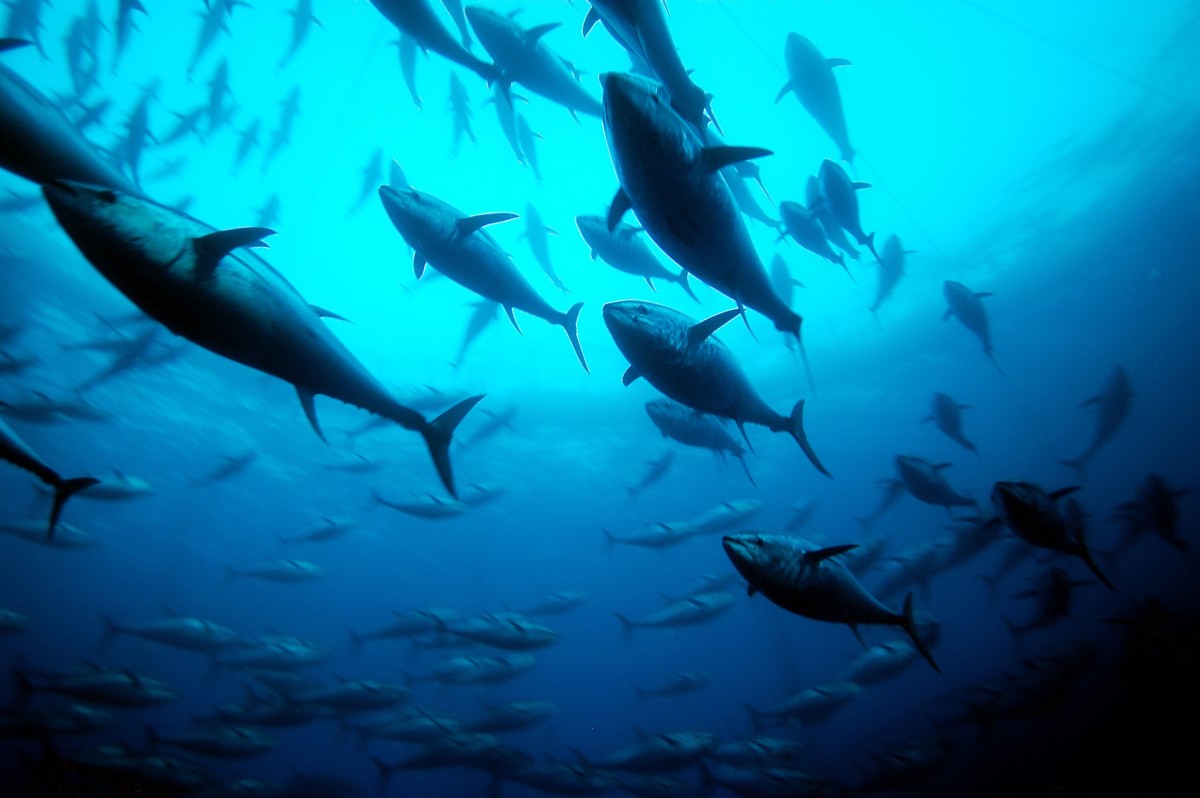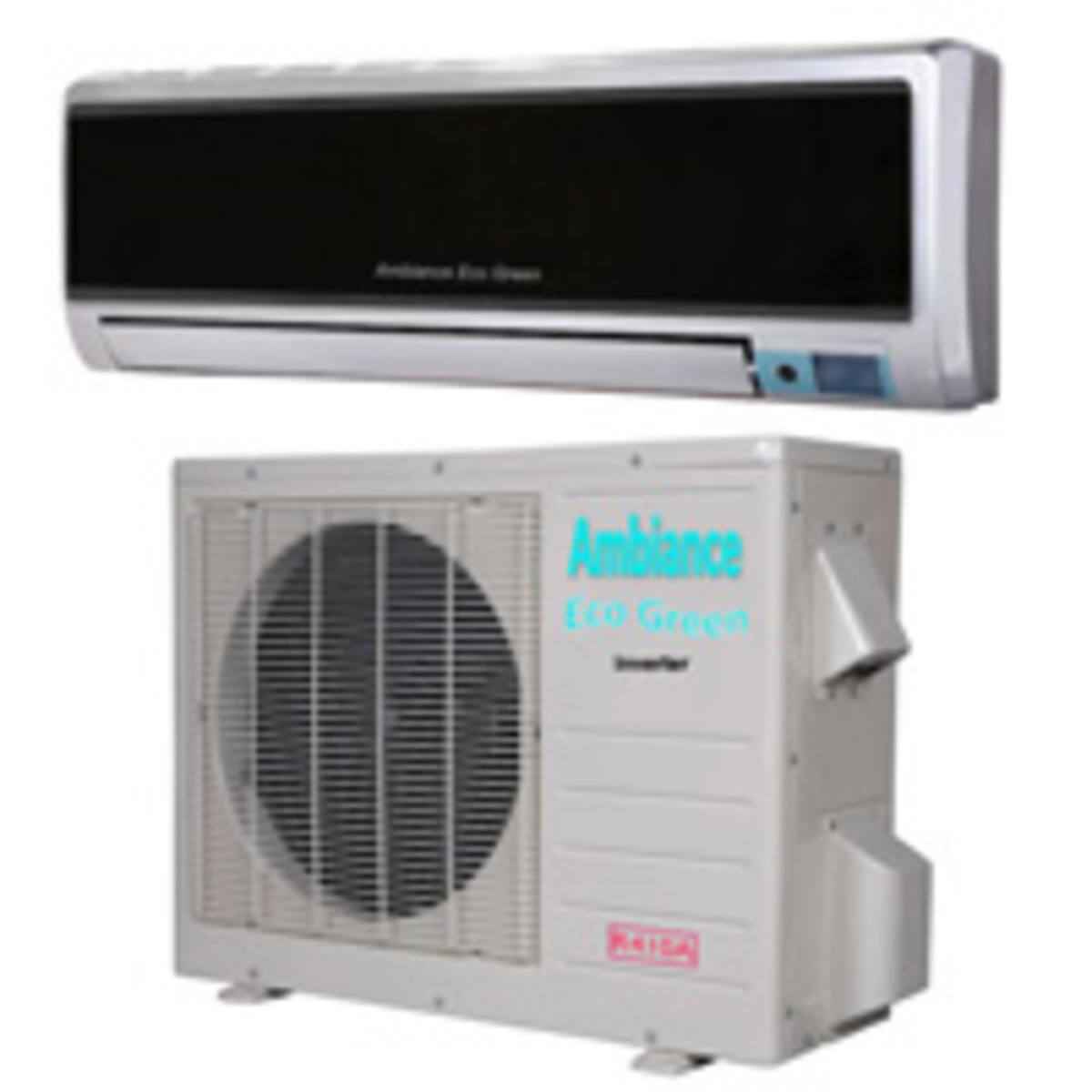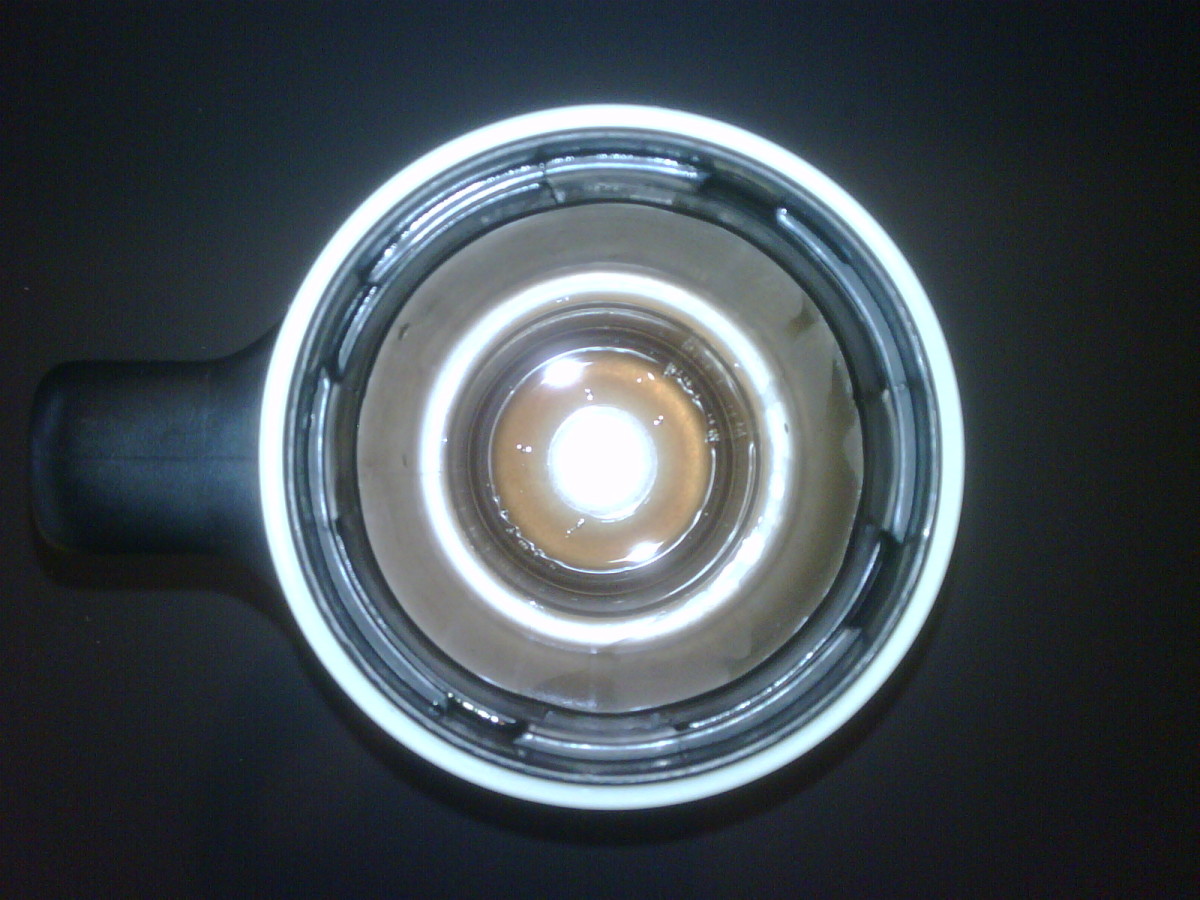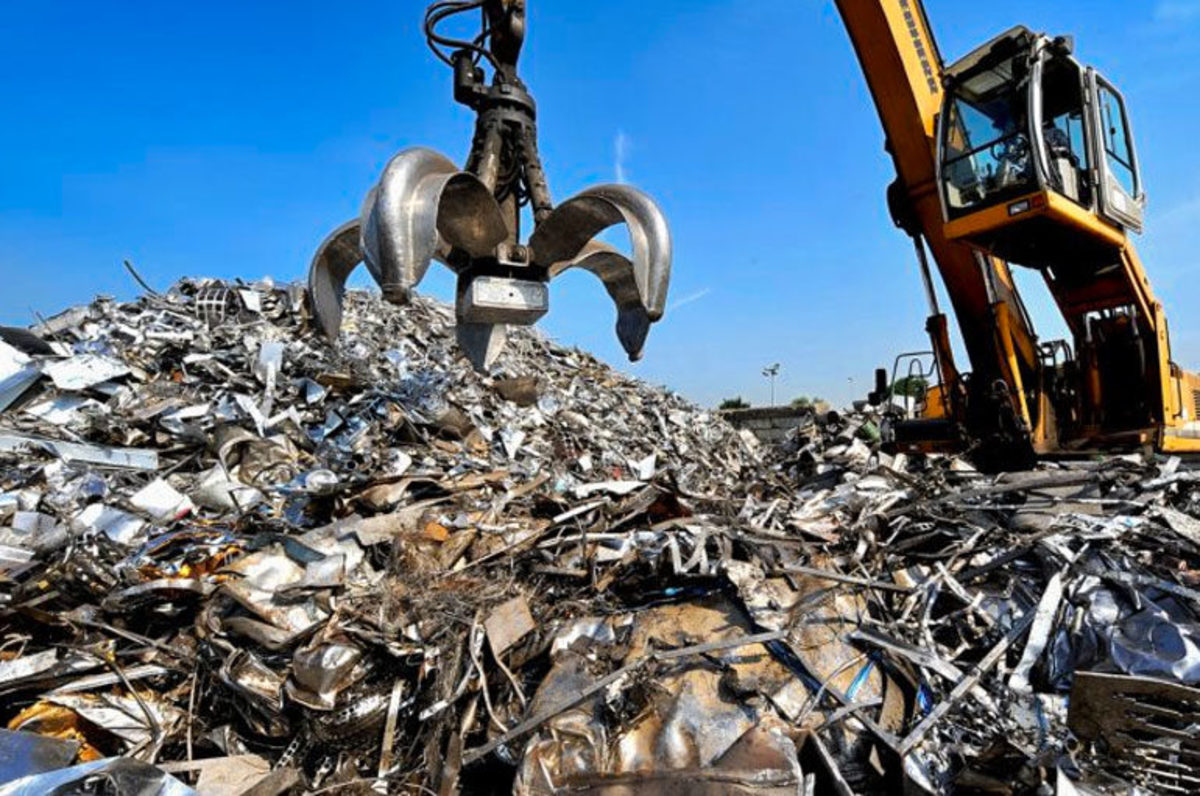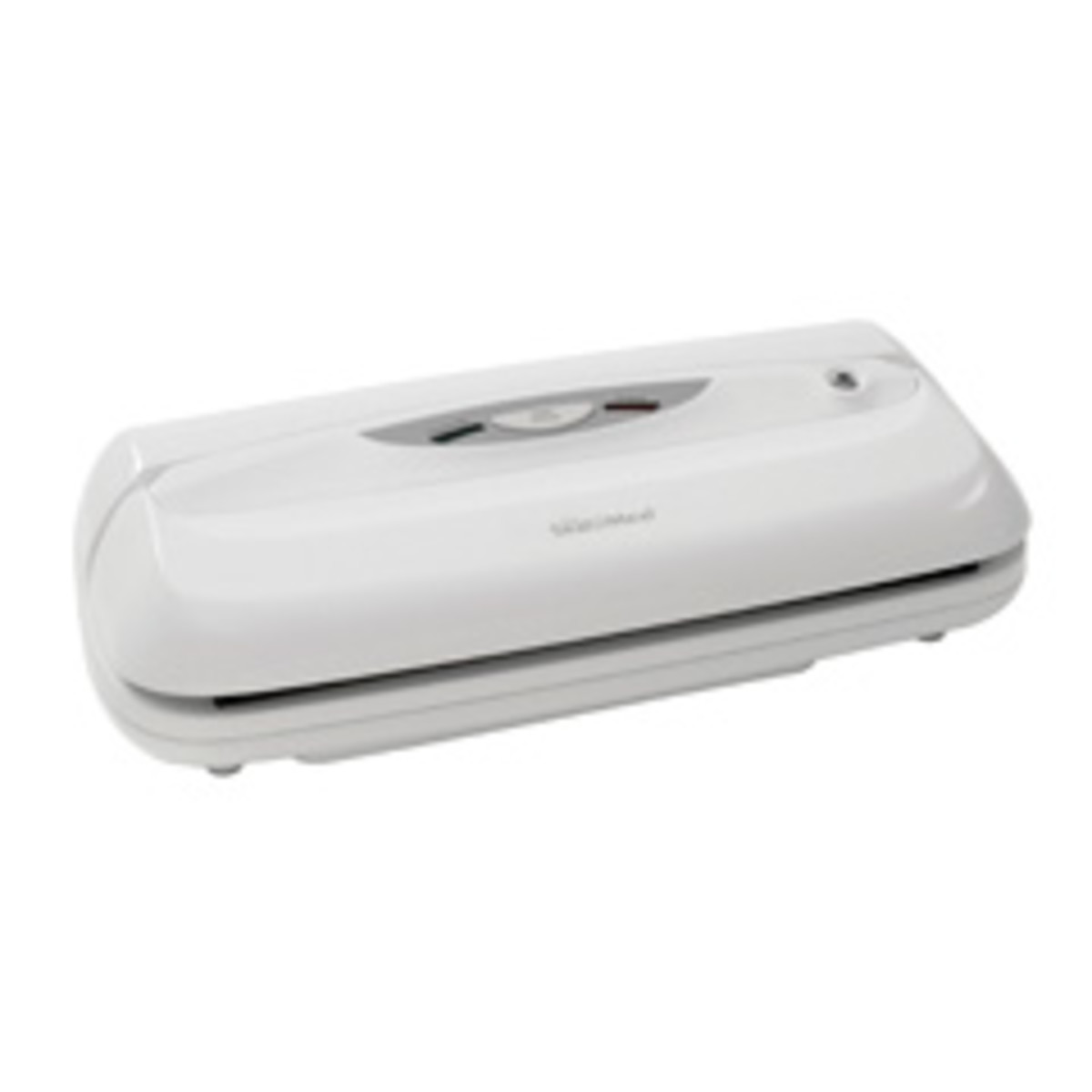- HubPages»
- Home and Garden»
- Home Appliances»
- Kitchen Appliances
What is Exactly a Refrigeration or Air Conditioning system?
Definition of Refrigeration System.
The basic idea of Refrigeration first came from the 2nd Law of Thermodynamics. Which states that "Its Impossible to transfer heat form a lowers temperature body to a higher temperature body without the help of any third agent". This law introduced the idea of Refrigeration and need of a refrigerant to transfer heat from the hot body to cold body.
The refrigeration was once a part of Thermodynamics but the field became so vast that it became an individual subject then. As the increase of use of refrigeration system it is now a very rich subject worldwide.
For clear understanding its necessary to know what is a Refrigeration system, it is defined as a system which can reduce the temperature or heat of a substance under a controlled condition. So from the definition we can see that its purpose is to reduce heat form any required substance.But its impossible if you try to achieve if normally, because you can't keep a substance under atmospheric temperature without heat reduction from that substance.
For example if a body at lower temperature than atmosphere it will gain heat from the atmosphere until it achieve the same temperature. Similarly if a hot body is kept in the open atmosphere it will lose its heat until it achieve the atmospheric temperature. So the difference is heat gain and heat lose. Cold body gains heat, and hot body loses it. The refrigeration is the system which keeps the cold body at its cold state which is obtained by the processing the refrigerant. The refrigerant is the "Third agent or external agent" which absorbs the heat and releases to the atmosphere and keep the body or substance at cold state.
Unit of Refrigeration: The unit of Refrigeration is is called Tonne of Refrigeration. A tonn of refrigeration means The cooling effect obtained by the melting of 1000kg of ICE from 0°C to 0°C water. For practical use 1 tonne of Refrigeration= 210 kJ/min or 3.5kW.
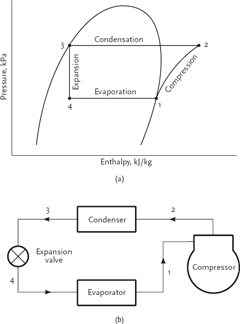
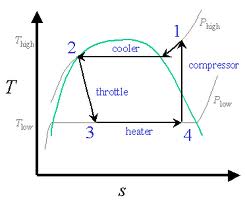
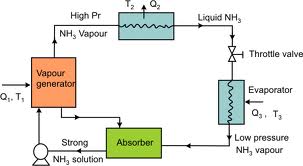
Classification of Refrigeration system.
Refrigeration system Mainly work on Reversed Carnot cycle. Its the reversed system of Heat Engine as it's input is work and output is cooling effect. So total heat reduction is proportional to the work input given to the system according to the 1st law of thermodynamics.
The basic Refrigeration system which is called "Vapour Compression system" it operates on Reverse Carnot cycle and its the most simple one and this method is widely used for its simplicity, efficiency and Compactness. This system uses different refrigerant according to the requirements. The most widely used refrigerant's are Ammonia, Carbon-di-Oxide, Freon's.
This system consists 4 main part's : 1: Compressor: It compresses the refrigerant to a particular pressure and temperature and reduces the volume.
2:Condenser: It reduces the heat of the refrigerant as it was at high pressure and temperature. The pressure does not reduce in condenser.
3: Expansion Valve: It reduces the condensed refrigerants pressure and as suddenly the refrigerant depressurize the temperature reduces drastically.
4: Evaporator: Here the refrigerant absorb the required heat from the body or substance to be cooled, and become vaporized and ready to go to the compressor for next cycle.
Another most Popular Refrigeration method is "Vapor Absorption Refrigeration System", this is mainly developed to reduce the compression work on Vapor compression cycle. This system replaces compressor with another subsystem which contains a Pump, Absorber, Pressure reducing valve and a Generator. Other part's are similar to Vapor compression system.
This system uses ammonia solution as refrigerant. The 3rd image shows the whole system of the vapor absorption refrigeration system. The high pressure ammonia vapor Goes to condenser and become cold then the liquid ammonia goes through expansion valve where it depressurize and become more cold then it moves toward the evaporator and here it absorbs heat from the body which to be cooled. Then the low pressure vapor ammonia moves toward the absorber which absorbs the ammonia and make a strong solution which is then pumped toward the generator, this generator generates vapor of ammonia using steam or heat supply. This vapor again goes to the condenser and the procedure repeats. its bit complicated but it has good efficiency.
It mainly used for industrial purposes, rather than Domestic purpose.


